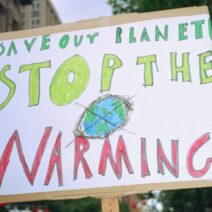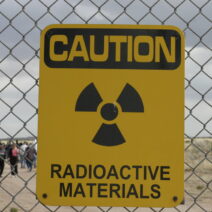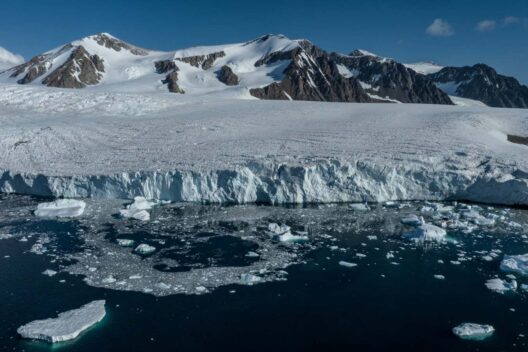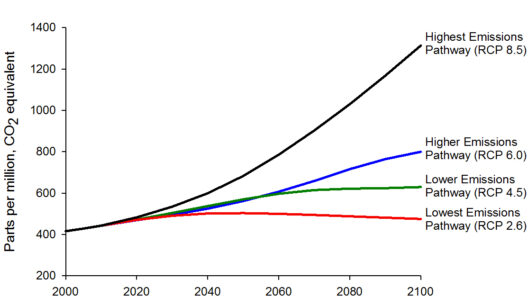Heatwaves are becoming an increasingly prevalent phenomenon due to the alarming escalation of global temperatures, a direct consequence of climate change. As our planet warms, these extreme heat events are intensifying, creating a daunting scenario that society must confront. This article delves into the multitude of factors contributing to heatwaves, practical survival strategies, and the pressing need for systemic change in how we address climate-related challenges.
At the outset, it is essential to recognize that heatwaves are more than just high temperatures; they represent a complex interplay of meteorological patterns, geographical nuances, and human activity. The term “heatwave” refers to prolonged periods of excessively hot weather, which can disrupt daily life, exacerbate health risks, and strain natural resources. The World Meteorological Organization defines a heatwave as a period of at least three consecutive days during which the temperature exceeds a historical threshold, significantly affecting the environment and humanity alike.
A common observation in the discourse surrounding heatwaves is the growing public fascination with extreme weather patterns. This intrigue can be attributed to their dramatic implications for daily life, agriculture, and infrastructure. However, beneath this surface fascination lies a more pressing narrative—one that highlights the urgent need for comprehensive climate action. Understanding the underlying causes of increasing heatwave frequency is key to grasping the larger issue of global warming.
There are multifaceted reasons behind the intensification of heatwaves. One major factor is anthropogenic climate change, driven primarily by the burning of fossil fuels. The resultant greenhouse gas emissions trap heat within our atmosphere, leading to a rise in average global temperatures. Coupled with this is the urban heat island effect, where metropolitan areas experience significantly higher temperatures than their rural counterparts due to dense construction, transportation emissions, and limited vegetation.
Another contributing element is the alteration of natural weather patterns. Climate change affects the jet stream—a fast-flowing ribbon of air that influences weather across the globe. As the climate warms, the jet stream becomes more erratic, resulting in prolonged periods of stagnant weather. This stagnation can cause extreme heat to settle over regions for days or even weeks. The interplay of these factors creates a perfect storm, manifesting in what many are calling “heatwave hell.”
With the understanding of how heatwaves are becoming more severe, it is incumbent upon individuals and communities to adopt strategies to survive these extreme temperatures. First and foremost, awareness is crucial. Individuals should educate themselves about the symptoms of heat-related illnesses, including heat exhaustion and heat stroke. Recognizing the early signs—such as dizziness, excessive sweating, and fatigue—can mean the difference between life and death in a heatwave scenario.
Staying hydrated is paramount. During periods of extreme heat, the body loses water through perspiration, and failing to make up for this loss can lead to severe dehydration. It is advisable to drink copious amounts of water and to limit alcohol and caffeine intake, as these substances can exacerbate dehydration. Additionally, consuming light, high-water-content foods like fruits and vegetables can aid in maintaining hydration levels.
When heatwaves strike, finding refuge in cooler environments becomes vital. This necessity underscores the importance of accessible public spaces equipped with air conditioning or shade. Communities should have designated cooling centers available to vulnerable populations, particularly the elderly and those with pre-existing health conditions. Furthermore, strategic landscaping to urban areas—such as planting trees and creating parks—can mitigate heat impacts, providing natural cooling mechanisms.
Another survival strategy involves dressing appropriately; lightweight, loose-fitting, and light-colored clothing can deflect sunlight and facilitate adequate body ventilation. If outdoors, one should seek shelter during peak sunlight hours, typically between 10 a.m. and 4 p.m. Wearing sun protection like hats and sunscreen is equally essential in shielding the skin from harmful UV rays.
While individual actions are crucial, systemic changes are imperative to address the root causes of climate change and, by extension, extreme heat events. Mitigating greenhouse gas emissions must be a priority for governments, industries, and individuals alike. Transitioning to renewable energy sources, enhancing energy efficiency, and promoting sustainable agriculture practices will help combat climate change and its consequences, including heatwaves.
Moreover, climate resilience must become an integral component of urban planning. As cities evolve, integrating sustainable practices—like green roofs, reflective pavements, and expanded public transportation networks—can create environments that are better suited to face the exigencies of a warming climate. This includes investing in climate adaptation strategies, ensuring communities are equipped to handle extreme weather events effectively and sustainably.
In conclusion, the phenomenon of heatwaves in a warming climate is both a pressing concern and a call to action. While survival techniques and personal preparedness are essential, they must be complemented by broader, systemic strategies rooted in sustainability and resilience. Addressing the multifaceted causes and implications of heatwaves—both immediate and long-term—is crucial. Ignoring this challenge will only escalate the problems we face. It is incumbent upon us to engage in meaningful dialogue and proactive measures to ensure a livable planet for future generations.






